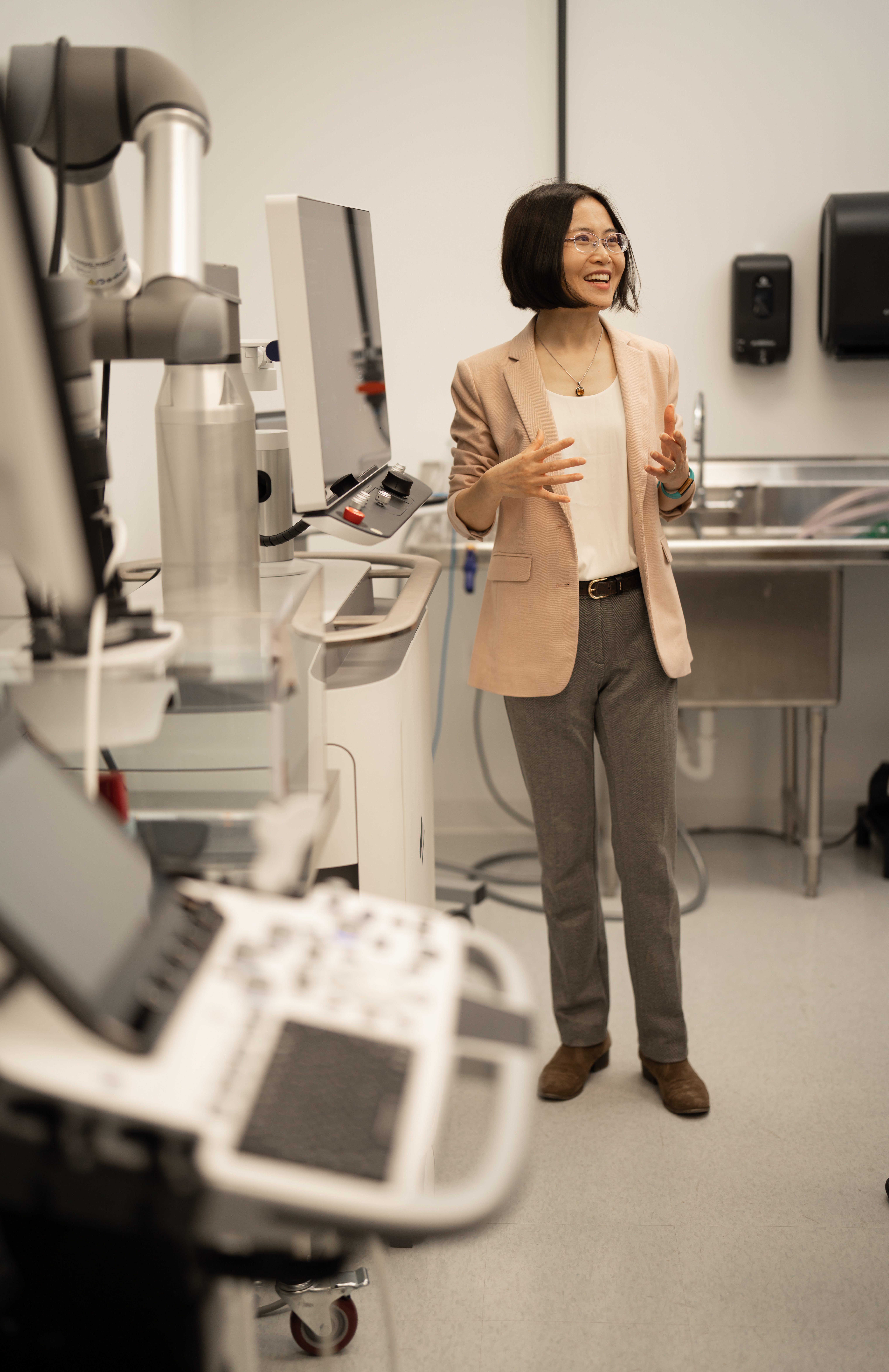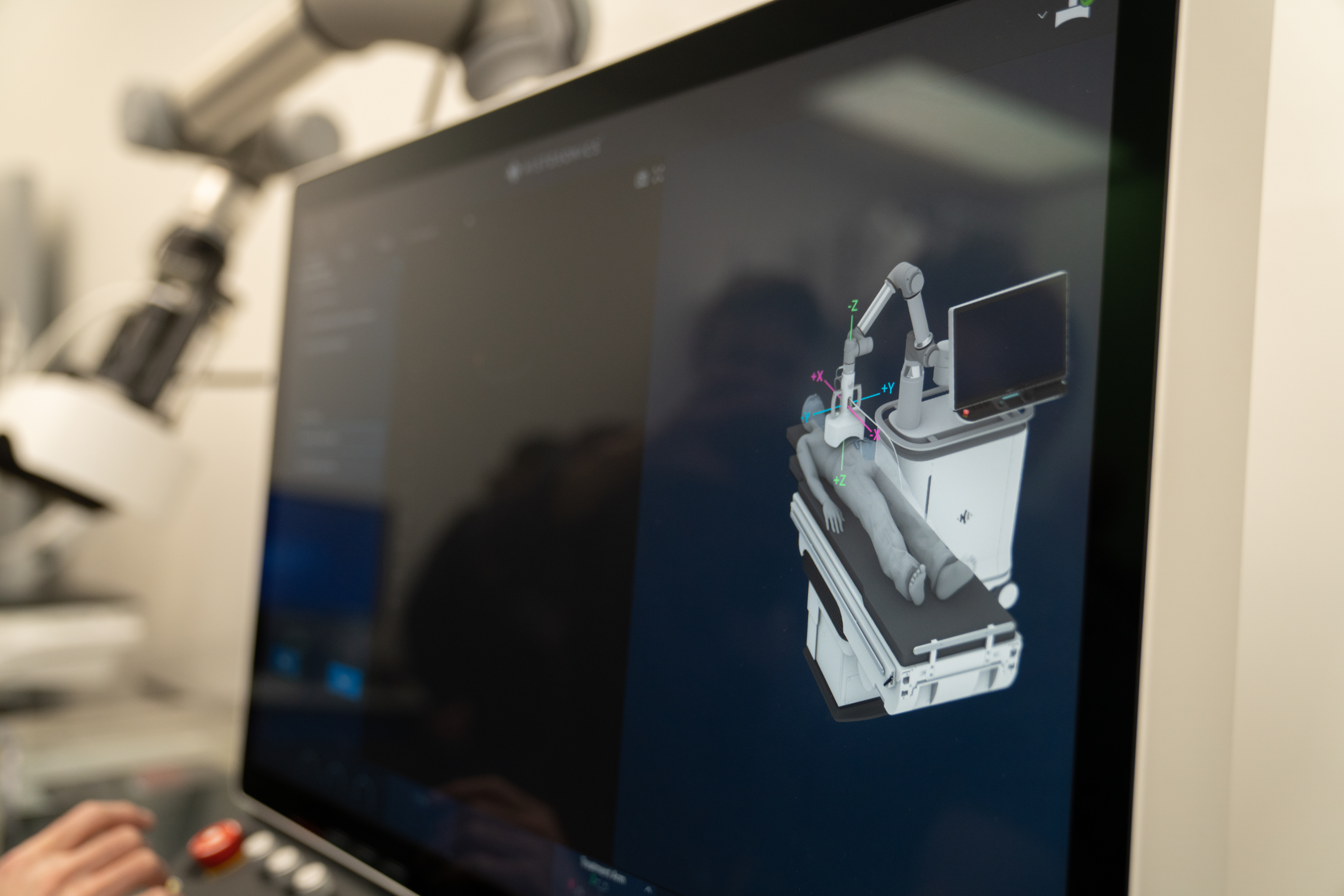“Histotripsy is projected to have a multi-billion-dollar impact on the national economy. The United States is an economic leader in innovation, particularly biomedical. We don’t want to give that up.”



Professor Zhen Xu performed her first histotripsy experiment nearly a quarter century ago in a University of Michigan laboratory funded by the National Institutes of Health.
The goal was to develop a method using ultrasound to remove unwanted tissue in young children and infants without surgery or incisions.
Over a decade of trial and error, Xu and her team discovered how to generate a “bubble cloud” from naturally occurring gas pockets in the targeted tissue. These bubbles rapidly expand and collapse, breaking down tissue at the cellular level. The outpatient procedure is guided by real-time ultrasound imaging, destroying targeted cancerous tissue with minimal damage to surrounding healthy tissue.
Remarkably, in some cases, the effect stimulates the patient’s immune system to continue attacking the cancerous tissue even after the procedure.
“I have been told by young mothers undergoing cancer treatment, ‘I’m losing my appetite and hair. I’m in pain and even my teeth are loosening. My cancer just keeps returning and I’m only suffering through this because I don’t want my kids to grow up without a mother.’” said Xu, Li Ka-Shing Endowed Professor of Biomedical Engineering and professor of radiology and neurosurgery.
“But with histotripsy, there is hope, allowing patients to say, ‘I can do this. I can undergo this treatment year after year.’ As a single-session procedure, it offers a chance to reclaim precious years of life, providing some the opportunity to watch their children grow up.”
Progress on Xu’s groundbreaking research would slow tremendously with any cuts or halts to federal research dollars. Earlier this month, a federal judge blocked a recent NIH order to cap indirect costs for new and existing federal grants at 15%.
The new rate would have replaced previously negotiated rates with universities and research institutions, including U-M’s current negotiated rate of 56%. The Trump administration can still appeal the judge’s decision.
“Losing funding halts our research,” Xu said, “but restarting after disruptions is also challenging. Pre-clinical models take time to establish, hiring freezes halt recruitment and researchers lost to budget cuts may pursue other opportunities. This uncertainty can deter incoming students, ultimately impacting the future of the field.”
Today, more than 40 hospitals offer histotripsy treatment for liver tumors nationwide, with more than 1,500 patients treated. There are clinical trials underway for kidney and pancreas tumors. Research continues to explore its use for breast, brain, skin and thyroid cancers, as well as its potential for addressing neurological diseases like stroke and epilepsy.
HistoSonics, a U-M startup founded to commercialize histotripsy, anticipates that its Edison Histotripsy System will be used to treat 100,000 patients by 2030.
“Histotripsy is projected to have a multi-billion-dollar impact on the national economy,” Xu emphasized. “The United States is an economic leader in innovation, particularly biomedical. We don’t want to give that up.”
